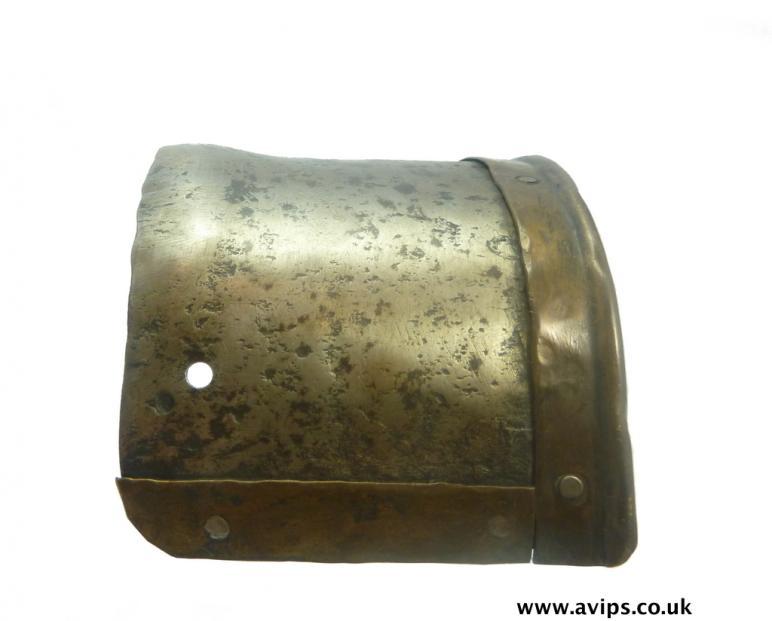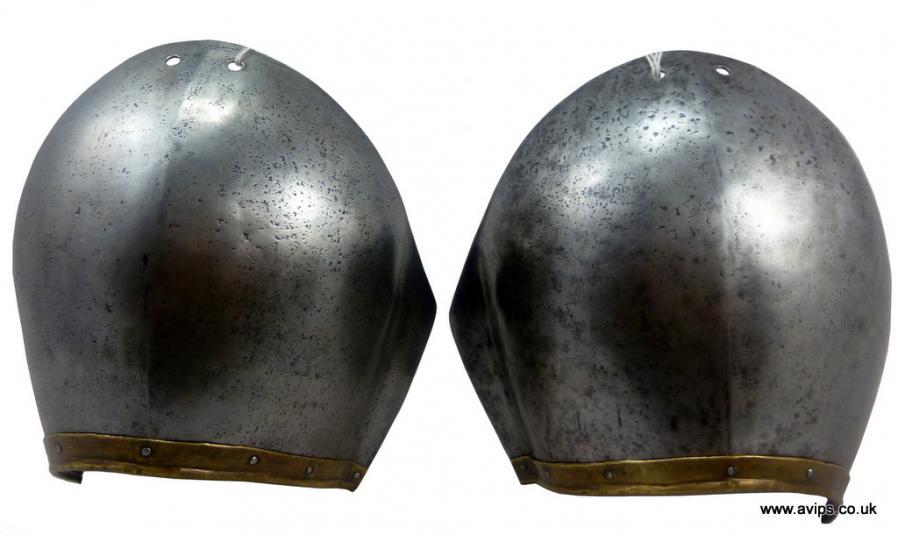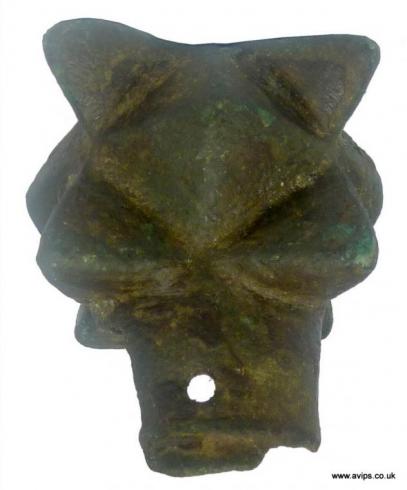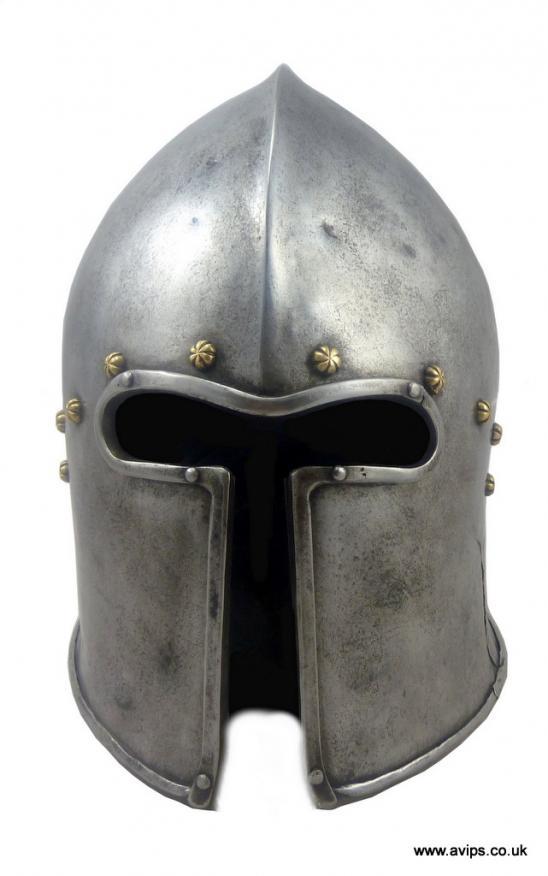14th CENTURY STYLE REREBRACE LAME WITH LATTEN BORDERING
Most likely a 19th Century reproduction this item of armour is a lame which would have fitted onto a 14th century arm harness. It is bordered with brass and has a domed edge seen on some lames to help its fit into the couter for greater quality in the articulation of the joint. Given its brass bordering though it is likely that it would have been attached to another lame which provided... read more
120.00 GBP
A MAGNIFICENT PAIR OF ITALIAN SPAULDERS IN THE STYLE OF 1380
Formed beautifully to follow the shape of the shoulder they have a clean medial ridge at the top paralleled by two holes for a point to mount through to the underlying garment of cloth or maille.
Flanged out at the front to flow over the shape of the pectoral muscles providing added coverage for the vulnerable armpit. A latten border is applied to the bottom edge in brass, rive... read more
EXCAVATED MEDIEVAL BRONZE MACE HEAD CIRCA 1100 - 1300
An extremely rare excavated bronze Medieval Mace head dating 1100 - 1300 A.D. It still retains one of its mounting holes that attached it to a length of hardwood. The other one is missing that is probably how it was lost, A similar example can be found on the British portable antiquities website:
http://finds.org.uk/database/artefacts/record/id/163436
A good rare... read more
ATTRACTIVE MATCHED PAIR OF FLUTED STEEL BESAGEWS
An excellent matched pair of gothic style fluted besagews. They are a great example of the armouring ingenuity of the 15th century. The besagew supplied great protection to the armpit, and was mostly seen on armours coming out of Augsburg, Innsbruck, Nuremburg and Landshut, in the period 1450 - 1490.
The besagew could either be riveted to the shoulder defence, usually to the spa... read more
A BARBUTA IN VENETIAN STYLE OF CIRCA 1430 - 1450
This Venetian style sallet's facial opening resembles a classic example of surviving barbuta. It is modelled with a Corinthian T shape opening with the crest re-curved and tail extending well back. In profile the cheek stays in line with the sight, dating its style to circa 1430 – 1450. However, the brass rivets suggest it is of later manufacture.
The opening widens marg... read more






